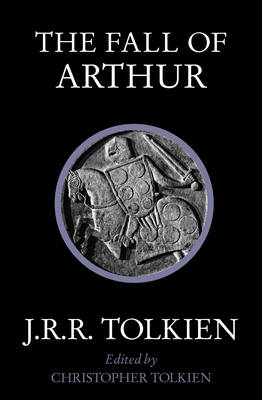Reviewed by Briana @ Pages Unbound on
The poem is certainly worth reading. A better combination than King Arthur and J.R.R. Tolkien can hardly be imagined. As a medievalist and an author interested in creating mythology for England, Tolkien doubtless must have known and loved the Arthurian legend and it is only right he incorporate it into his own writing. Readers who love Tolkien will love seeing him work with this classic tale, just as he worked with Norse legends, Anglo-Saxon poems, and other medieval romances.
The rest of the book, however, readers can probably take or leave based on their preferences. The first section Christopher contributes is called “The Poem in Arthurian Tradition” and is essentially lengthy summaries of his father’s major soucres: Historia Regum Britanniae, the alliterative Morte Arthure, the stanzaic Morte Arthure, and Malory’s Morte d'Arthur. I, having read most of these works in the original, did not find this section very interesting. Those who have not read the original may find the section either enlightening or tedious, based on whether they enjoy reading such summaries. Christopher does helpfully point out what is different between these works and his father’s work, however, so readers did not bother to flip back and forth between the poem and this section to figure it out for themselves.
The second section is “The Unwritten Poem and its Relation to The Silmarillion.” Christopher publishes some of his father’s notes about The Fall of Arthur and highlights potential relationships between Lancelot and Earendil and Avalon and Tol Eressea. Unfortunately, Christopher does not always know what to make of potential parallels or relationships between The Fall of Arthur and The Silmarillino and often simply observes their existence without drawing any interpretations or conclusions. This section also contains detailed oulines J.R.R. Tolkien intended to follow when finishing th poem and some drafts of cantos not included in the officially published poem.
In the third section, “The Evolution of the Poem,” Christopher publishes various drafts of each cantos and points out some changes his father made as he wrote and rewrote. This chapter will be interesting to those readers who enjoy exploring the evolution of texts but can be skipped by those who do not.
The appendix is a brief explanation of the alliterative Old English poetry form that Tolkien adopted for The Fall of Arthur, mostly in J.R.R. Tolkien’s own words, as Christopher tokien publishes parts of a talk his father gave on the subject. This section may not be the most accessible explanation to readers completely unfamiliar with the verse form, but it does nicely highlight the major features of Old English poetry. The appendix closes with an excerpt from The Fall of Arthur, with the “patterns of strong and weak elements in each half-line” listed, so readers have a clear example of how the patterns work.
Each section of the book can be read on its own, and it will behoove readers to determine beforehand which they may find useful. The book itself seems unclear on whether it is intended for an audience who loves Tolkien but knows nothing about Arthur or an audience of medievalists who love Arthur but may not particularly care about Tolkien. It tries to walk a middle ground, speaking to both a scholarly and a popular audience—and therefore will leave both types of readers a little unsatisfied. The poem itself is beautiful and worth a read by anyone. Christopher’s commentaries can be read or skipped with discretion.
Reading updates
- Started reading
- 4 July, 2013: Finished reading
- 4 July, 2013: Reviewed
